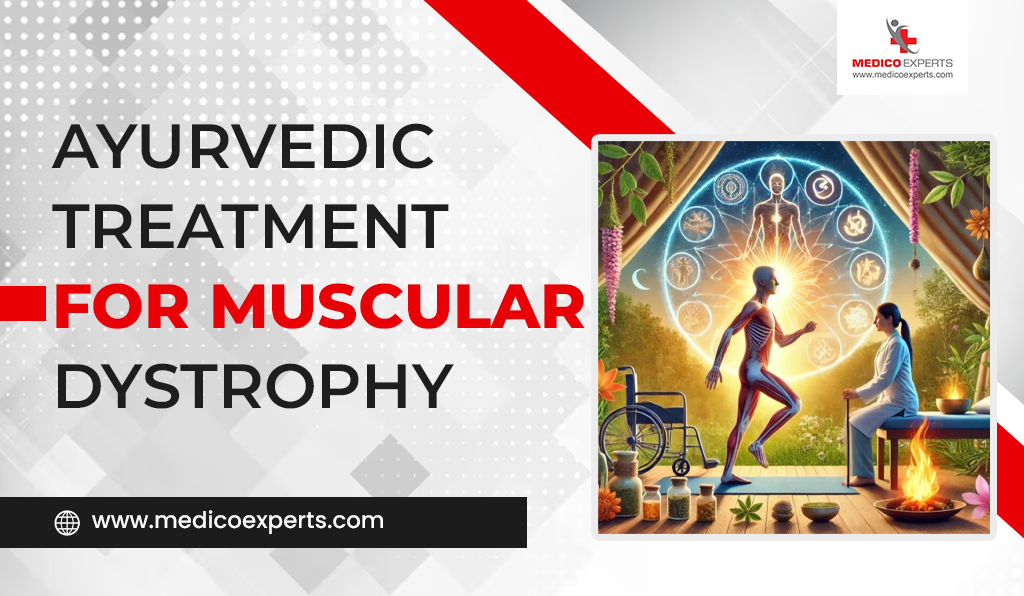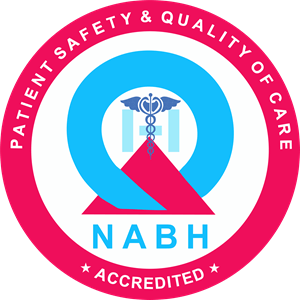Living with muscular dystrophy can feel like an uphill battle. The constant muscle weakness, limited mobility, and loss of independence can take a toll on both the body and mind. While modern medicine focuses on symptom management, the quest for long-term relief remains challenging.
But what if there was a way to address the root cause of muscle deterioration? Ayurveda, the ancient Indian system of medicine, offers a holistic approach that goes beyond surface-level treatment. Among its therapies, Panchakarma stands out as a powerful detoxification and rejuvenation treatment that offers renewed hope for individuals with muscular dystrophy.
In this blog, we’ll explore how Panchakarma therapy can help manage muscular dystrophy symptoms. From understanding Ayurveda’s perspective on the condition to breaking down the detoxification process, we’ll cover how this time-tested practice can support muscle health and overall well-being. Whether you’re seeking an alternative treatment or complementing your current regimen, this guide will shed light on a holistic path to relief and resilience.
Understanding of Muscular Dystrophy in Ayurveda
In Ayurveda, muscular dystrophy can be associated with ‘Mamsa Dhatvagnimandya‘, which refers to a lack of healthy metabolism for muscle tissues, and also with ‘Mamsakshaya’, which means wasting away of muscles.
The major cause of muscular dystrophy, according to Ayurveda theories, is excess Vata dosha. Vata dosha is the energy of movement and control that handles all the functions related to muscles and movement. In addition to Vata, the imbalance between Pitta and Kapha also causes aggravation of muscle wasting.
Ayurveda works to treat problems at their roots, and it focuses on bringing balance to those energetic forces called doshas, cleansing the body and rebuilding muscle tissue too. Panchakarma therapy is the reason behind achieving these functions.
What is Panchakarma therapy?
Panchakarma is a traditional Ayurvedic therapy designed to cleanse the body of harmful toxins (called Ama) and restore balance to the three doshas — Vata, Pitta, and Kapha, which govern various functions in the body. Think of it as a full-body reset that helps the body heal from within.
This therapy is often recommended for chronic diseases like muscular dystrophy, where the muscles weaken and deteriorate over time. Unlike conventional treatments that mainly focus on managing symptoms, Panchakarma addresses the root cause of imbalance in the body. By eliminating toxins and rejuvenating tissues, it helps to restore strength and vitality.
The Five Therapies in Panchakarma
The five primary therapies in Panchakarma include:
- Vamana (Therapeutic Emesis): This involves induced vomiting to flush out toxins from the stomach and upper digestive tract. It’s beneficial when toxins accumulate in the chest and stomach region.
- Virechana (Purgation Therapy): This method uses herbal laxatives to cleanse the liver, intestines, and colon. It’s particularly effective in eliminating excess Pitta dosha, which can cause inflammation.
- Basti (Medicated Enema): Special herbal oils and decoctions are introduced into the rectum to clean the colon and regulate Vata dosha. For muscular dystrophy patients, Basti therapy is often preferred as it nourishes and strengthens muscles while reducing stiffness.
- Nasya (Nasal Administration): Medicinal oils or herbal juices are applied through the nostrils to detoxify the head, neck, and nervous system. This can help relieve symptoms like muscle rigidity and nervous system imbalances.
- Raktamokshana (Bloodletting): Though rarely used today, this method involves drawing a small amount of blood to cleanse toxins from the bloodstream. It’s typically recommended for specific conditions involving blood impurities.
For individuals with muscular dystrophy, Basti therapy stands out as it directly targets the root imbalance of Vata dosha, which is often responsible for muscle degeneration. With its gentle cleansing and nourishing properties, it offers relief from stiffness, pain, and muscle weakness, improving overall quality of life.
Advantages of Panchakarma Therapy for Muscular Dystrophy
Ayurvedic treatments, especially the Panchakarma therapies, bring a whole bunch of great benefits to people who wish to get treatment for muscle diseases like muscular dystrophy. They are:
- Detoxification: The therapy removes toxins accumulated in the body, which activates metabolic functions.
- Strengthening of Muscles: Rejuvenating oils and herbal medicines strengthen the muscles.
- Improved Mobility: Panchakarma relaxes rigid muscles and enhances flexibility.
- Relief from Pain: The therapies reduce inflammation and relieve pain in muscles.
- Brain Clarity: Toxins can be flushed out of the body too, and that clears up some mental fog and makes thinking sharper and more focused.

Panchakarma Procedures for Muscular Dystrophy
Panchakarma therapy is a multi-step process designed to cleanse the body, balance the doshas, and restore overall health. For individuals with muscular dystrophy, these procedures offer a holistic approach to managing symptoms by reducing muscle degeneration and promoting tissue regeneration. The therapy consists of three main stages — Purvakarma (preparation), Pradhanakarma (main treatment), and Paschatkarma (post-therapy care). Let’s take a closer look at how each stage supports muscular dystrophy management.
1. Purvakarma (Preparation Phase)
Before the initiation of Panchakarma, the body is readied by Snehana (oleation) and Swedana (sudation) treatments. Snehana refers to the application of medicated oils both internally and externally, making the tissues slippery and facilitating the removal of toxins. Swedana, on the other hand, involves therapeutic sweating to open up the channels, clear passages, and enhance toxin elimination.
2. Pradhanakarma (Main Treatment Phase)
Based on your unique doshic imbalance and how muscular dystrophy is affecting you, specific Panchakarma procedures are chosen to bring your body back to balance.
Basti Therapy to Calm Vata:
- Anuvasana Basti: Think of this as a nourishing oil enema that strengthens muscles and delivers essential nutrients.
- Niruha Basti: A cleansing decoction enema that helps flush out toxins and balance Vata dosha.
Virechana to Cool Pitta:
This is a gentle purgation therapy that works to cleanse your liver and intestines.
It’s great for reducing inflammation and preventing further muscle damage.
Nasya for Nervous System Support:
Medicated oils are applied through your nostrils, which may sound unusual, but it’s a powerful way to clear your head and stimulate the nervous system.
It can help regulate muscle activity and support overall neurological function.
3. Paschatkarma (Post-Therapy Care)
After completing your main Panchakarma therapy, the journey doesn’t stop there. Think of this phase as your recovery and rejuvenation time.
- Dietary Guidance: You’ll get personalized advice on foods that support muscle strength and keep your doshas in balance.
- Herbal Medicines: Ayurvedic herbs will be recommended to nourish your body, reduce inflammation, and support muscle repair.
- Lifestyle Counselling: Simple changes in your daily routine can make a world of difference. From gentle exercises to mindful practices, you’ll learn how to maintain the results of your therapy and feel your best.
Scientific Evidence Supporting Panchakarma Therapy
Recent research proves the efficacy of Panchakarma therapy in treating neuromuscular diseases. The study lays great emphasis on its key role in reducing oxidative stress and managing those inflammatory measures while also cranking up the strength and function of muscles.
For instance, a study conducted by the Journal of Ayurveda and Integrative Medicine proved that Basti therapy significantly improved motor function and reduced muscle stiffness in patients with muscular dystrophy. Another really cool thing about using those natural oils in Panchakarma is that they help the muscles feel good because they reduce inflammation and, at the same time, help the muscles grow bigger too.

Cost of Ayurvedic Treatment for Muscular Dystrophy in India
The cost of Ayurvedic treatment for muscular dystrophy in India varies depending on the specific therapies and herbal medications prescribed.
- Herbal Medications: ₹5,000 – ₹20,000 per month (USD 60 – 240), depending on the herbs and formulations used.
- Therapies: ₹20,000 – ₹80,000 per month (USD 240 – 960), based on the intensity and duration of treatments like Panchakarma, Abhyanga, and Basti.
Conclusion
Panchakarma therapy, applied in Ayurvedic medicine for muscular dystrophy, provides a natural and holistic approach to addressing this challenging disease. Purifying the body, correcting the dosha balance, and revitalizing muscles, Panchakarma provides significant relief from symptoms and overall quality of life.
If you or your loved one is in search of an in-depth and personalized treatment plan, consider Panchakarma therapy with the expert care of Ayurvedic practitioners. Embrace the wisdom that’s been around for millennia and feel recharged and revitalized, and also bask in good health and pure blessings.
Curious to see how Panchakarma can make a difference in your journey with muscular dystrophy? Visit us.
Disclaimer: Panchakarma and other Ayurvedic therapies are considered complementary approaches that may help manage symptoms and improve quality of life in individuals with muscular dystrophy. These treatments should be pursued under the guidance of qualified Ayurvedic practitioners and in coordination with your primary healthcare provider.




